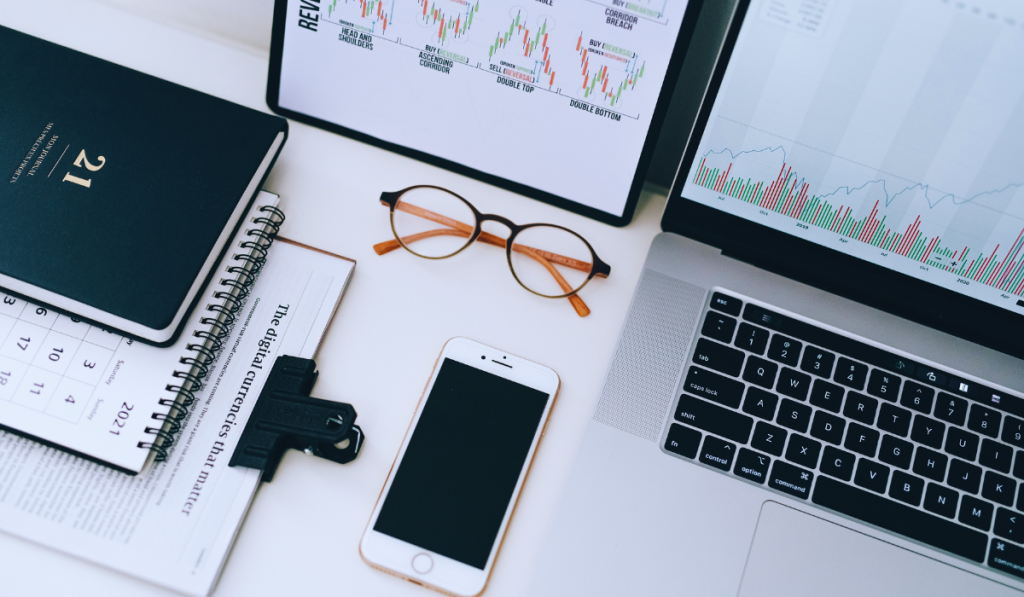How to Get Into Trading? Your Step-by-Step Starter Guide
Getting into trading can be one of the most rewarding decisions for those interested in financial markets, flexibility, and wealth-building opportunities. But it’s not as simple as opening an app and buying a stock. Understanding how to get into trading involves learning the basics, choosing the right tools, and developing consistent habits. If you’re starting from scratch, don’t worry, everyone begins somewhere. With the right approach, you can make smart moves early and avoid common beginner mistakes.

Understand the Fundamentals of Trading
Before you get into the mechanics, it’s important to define what trading actually means. Trading refers to the short-term buying and selling of financial instruments, such as stocks, forex, commodities, and crypto, with the goal of making a profit from price movements.
Unlike long-term investing, trading typically requires daily or weekly attention, depending on your style. Some traders make multiple trades per day (day traders), while others hold positions for several days or weeks (swing traders). If you’re researching how to get into trading, identifying which style fits your schedule and personality is a key early step.
Learn How Markets Work
Markets move based on supply, demand, economic news, company performance, and global events. Learning what influences price action helps traders predict potential movements and place smarter trades.
Begin by studying key concepts like:
- Bid/Ask prices
- Volume and volatility
- Support and resistance levels
- Candlestick charts and price patterns
Understanding these principles makes it easier to make sense of market behavior and build confidence in your decisions. If you’re seriously exploring how to get into trading, this foundational knowledge is essential.
Choose a Reliable Broker
Once you’re familiar with trading concepts, the next step is choosing a platform. A trading platform or brokerage is your gateway to the market. Look for brokers with:
- Low or transparent fees
- Real-time charting tools
- Fast trade execution
- Easy-to-use interfaces
- Strong security measures
If you’re unsure where to begin, try exploring demo accounts that most brokers offer. These allow you to simulate trades in real-time using virtual money. Practicing without real risk is one of the smartest ways to ease into trading and test different strategies.
Create a Trading Plan
A trading plan outlines how you approach the market. It includes:
- Your chosen trading style (day, swing, position)
- Markets you’ll focus on (stocks, forex, crypto)
- Entry/exit rules
- Risk limits per trade
- Profit goals
This plan becomes your decision-making guide. It helps prevent emotional reactions and impulsive trades. Without one, it’s easy to make inconsistent choices that harm your progress. Anyone learning how to get into trading should prioritize building a clear and realistic plan early on.
Start with Small Capital
You don’t need a large amount of money to start trading. Many brokers allow you to begin with as little as $100. Starting small limits your risk and gives you the space to learn without pressure.
Focus on developing consistency first. As you build confidence and experience, you can gradually increase your capital and scale your strategies. When considering how to get into trading responsibly, managing your expectations is key.
Implement Risk Management
Risk management is one of the most overlooked aspects by new No matter how skilled you become, losses are part of the game. What separates successful traders is how well they manage risk.
Apply these basic risk management techniques:
- Never risk more than 1-2% of your capital on a single trade
- Use stop-loss and take-profit orders to automate decisions.
- Avoid emotional trades and revenge trading.g
- Diversify your trades across different assets.
If you’re learning how to get into trading for the long run, this area deserves ongoing attention and refinement.
Keep Up with Market News
Financial markets are affected by news, earnings reports, global events, and political shifts. Staying updated on relevant information helps you anticipate market volatility and spot potential trading opportunities.
Subscribe to reliable financial news sources and follow market calendars. This habit keeps you engaged and aligned with what’s moving the market, essential for any trader seeking consistent performance.
Track Your Progress with a Trading Journal
Keeping a trading journal helps you analyze your trades, recognize patterns, and improve your strategy over time. For each trade, record:
- The date and time
- Entry and exit points
- Reason for entering the trade
- Outcome (profit or loss)
- Emotional state
Review your journal weekly or monthly. It will provide insights that no tutorial or course can offer. Journaling is often the missing link when traders wonder how to get into trading and stay on track for success.
Develop Emotional Discipline
One of the hardest lessons in trading is mastering your emotions. Fear and greed often cause people to exit trades too early, chase losses, or overtrade after a big win.
Learning to follow your strategy rather than emotions is a discipline that comes with time. Accept that not every trade will be a winner, but consistency and control will move you forward . If you’re truly focused on how to get into trading and stick with it, emotional control is non-negotiable.
Surround Yourself with a Trading Community
Joining a trading community or forum can shorten your learning curve. Discussing strategies, market news, and trade setups with others helps broaden your perspective . It also makes the journey less lonely.
At JoinX Capital, we’ve seen how collaboration among traders can accelerate growth. Community resources, mentorships, and shared insights offer powerful support for those just starting out.
Figuring out how to get into trading is a process that blends learning, practice, and persistence. Start with education, use demo accounts, stick to a plan, and focus on managing your risk. As your experience grows, so will your results. Remember that trading is a skill; it takes time to develop, but with commitment and discipline, it can become a valuable tool for financial freedom.
